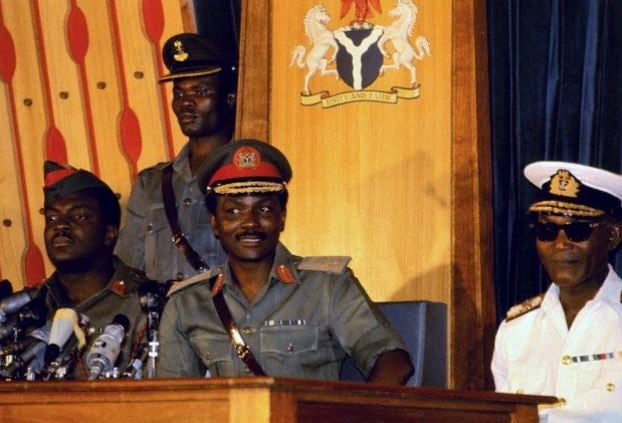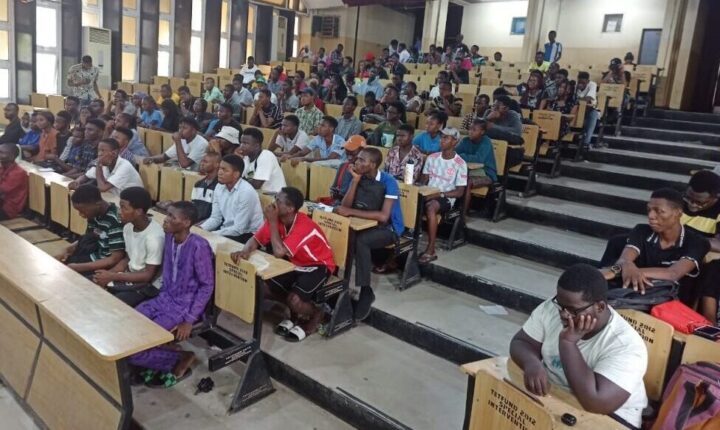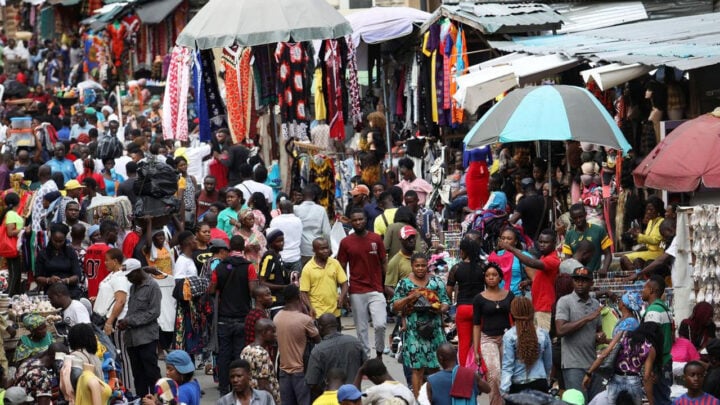There is palpable tension at petrol stations all over Lagos and spreading fast across the nation. Scarcity looms ominously. And queues have surfaced yet again. But this, actually, is one of the core reasons stakeholders in the downstream sector of the oil industry insisted on the need to remove subsidy from fuel.
The Depot and Petroleum Products Marketers Association of Nigeria (DAPPMAN), for instance, held that the abolition of subsidy would help to end perennial fuel scarcity, eliminate unnecessary hardship on citizens in need of fuel, reduce waste, eliminate the arbitrage that induces cross border smuggling and stimulate responsible consumption.
These fuel marketers must have taken their informed position in anticipation of a full deregulation, a total abolition of subsidy in which market forces will determine the price of petroleum products. They would have expected that the government would create a little if not comfortable leeway for access to foreign exchange by the importers of refined products at the same rate as NNPCL is calculating their forex from crude oil export so that buying petrol would no longer be a subject-matter of serious conversations. They couldn’t have thought that there would yet again be any form of artificial prices for petrol; a situation where the naira is sliding miserably against the dollar at the parallel market, where there is a surge in the price of crude oil in the international market and the pump price of fuel remains the same, stagnant, in their country, Nigeria.
It will be commonplace now to say that what Nigerians and indeed the fuel marketers are seeing is a different scenario, albeit a dangerous drama.
Advertisement
The hard fact today is that there is pressure on the supply of fuel if not full-blown scarcity. A lot of fuel stations are not selling, some are shut down because supply is not forthcoming. And there is no question that the Nigerian National Petroleum Company Limited (NNPCL) is to blame. We must call a spade a spade. News emerging from credible sources insists that NNPCL should take responsibility for the irregular supply and flow of fuel from the pumps.
According to one unimpeachable source, NNPCL’s fuel reserve has diminished seriously and after a tense meeting early this week, it resolved to supply petrol to only fuel marketers that own up to 50 petrol stations. For NNPCL to come up with a new criterion they should have allowed at least a six-month period before implementation. This was the same NNPCL that the group chief executive, Mele Kyari, only last week, told Nigerians that his corporation has over one trillion litres of petrol.
And now the behemoth has prioritised only NNPCL fuel stations for supplies. And since its stations are far from being enough to provide the fuel Nigerians need in towns and hamlets around the country, delays in supply soon started, fear of scarcity snuck in, and the queues returned. This selective supply to its stations is a crystal sign that NNPCL is not telling Nigerians the whole truth about the state of fuel supply. But this is made worse because the independent fuel marketers who own two, three or four stations across the country, in the remotest of villages, buy their products from DAPPMAN and the big petroleum marketers. With NNPCL starving them of supply and with no foreign exchange to import petrol, the return of queues seemed fated to happen.
Advertisement
However, very critical to this epileptic fuel supply is the issue of unfettered subsidy removal. Currently, petrol sells at N580.00 or N617.00 per litre. The difference is a matter of the area you are buying your fuel. And these prices have been so for about three months now.
Within this same period, the value of the naira has been steadily sliding downwards, reaching an abysmal low on the parallel market on Friday, October 20, 2023, with one dollar exchanging for N1,160. The price of crude oil has also been on an upward swing. Yet, the pump price of fuel in Nigeria remains the same at N580 and N617. One of the oil marketers stated categorically: “Even if the government provides us with foreign exchange today, nobody is going to be in a hurry to import PMS and sell at N570/617. If you know the landing cost, you’d know it makes no business sense”.
The national president of the Petroleum and Natural Gas Senior Staff Association of Nigeria (PENGASSAN) however threw a blazing light into why the price of fuel still remains the same. In his words: “Government still subsidises fuel… In reality today, there is subsidy because as of when the earlier price (N570) was determined, the price of crude in the international market was around $80 for a barrel. But today, it has moved to $93/94 per barrel of Brent crude. So, because it has moved, the price of petroleum also needs to move”. He added: “And if the exchange rate comes down today, we will not be paying subsidy because the price of petrol will go down. But with the current exchange rate and the price of crude oil in the international market, we have introduced subsidy”. In fact, an analysis of data provided by marketers and some industry stakeholders showed that the federal government could be paying as much as N1.68 trillion from September to December as subsidy.
The PMS dealers stressed that the price of fuel at this time should be between N890/900 per litre and nothing less. Indeed, at $92.51/bbl and N1,160/$, the landing cost is N796/litre, then the ex-depot price should be a minimum N820/litre and the ex-pump price should be N890/900 per litre.
Advertisement
If marketers are allocated forex by CBN to import PMS at NAFEM rate – N808.27/$ – closing rate on Friday, 20.10.2023 then the landing cost would be N562/litre, the ex-depot price would be N580/590 per litre and the ex-pump price would be between N630 and N670 per litre, depending on the transportation costs.
But the group chief executive of NNPCL, Mele Kyari, insists there is no scarcity and attributed the sudden emergence of queues to hiccups in distribution. As he put it: “No subsidy whatsoever. We are recovering our full cost from the products we are importing…..”.
Apparently, NNPCL is calculating at N750/$ maximum. At N750/$, the landing cost is N508/litre maximum. Marketers cannot compete with NNPCL as there is no level playing ground as there is a forex subsidy applied by NNPCL.
Despite Kyari’s denials about the impending turmoil in fuel supply and reintroduction of subsidy, leading players in the oil industry, stakeholders and respected economists have warned that any attempt to bring back subsidy will spell categorical disaster for the nation’s economy. This is the time to face the true market dynamics. Removal of subsidy they say offers transformative opportunities to both Nigeria’s oil and gas downstream sector and the government.
Advertisement
Uche Chukwuemeka, a US-based economist and business analyst, says “the post-subsidy removal era offers companies opportunities to quickly reinvent themselves to withstand global economic shifts, capricious energy prices, Nigeria’s macro-economic conditions and opaque forex regime”. As the downstream sector becomes more competitive, he adds, “companies would need to review their supply chain management, leverage digital technology and have a sound risk management system to manage cost and deliver value to their stakeholders”.
Chukwuemeka who has over 29 years of consulting experience, stated that subsidy can only offer artificially low price of petrol and shield companies from the reality of their profits. “The government needs to know that there are strategies available to it to keep the price of PMS relatively affordable”. It must make sure forex through the official window is available to fuel importers, end any form of monopoly and make the cost of import less complex, cumbersome and costly “.
Advertisement
Chukwuemeka averred that removal of subsidy should make fuel more available and not the opposite. This would make the trade competitive and help to reduce the price of fuel. The government should also reduce the impact of subsidy pain by being an exemplar. It needs to curb the huge allowances of the federal lawmakers and drastically reduce the size of government bureaucracy and the recurrent expenditure which I understand is N8 trillion in the 2023 budget. That is over 400% increase between 2015 and 2023,” he concluded.
No question, the current emerging fuel scarcity is avoidable. The long lines could be shortened. And to achieve this, every word coming out of NNPCL at this time must be the solemn trust and instantly verifiable. They owe Nigerians the hard truth. NNPCL must banish any spirit of opportunistic monopoly and extend supplies to fuel marketers.
Advertisement
Above all, they must consign the whole story of fuel subsidy to the footnotes of our history and point the way to the transformative economic momentum that post subsidy removal era holds for Nigerians and indeed our nation.
Advertisement
Views expressed by contributors are strictly personal and not of TheCable.
Add a comment







